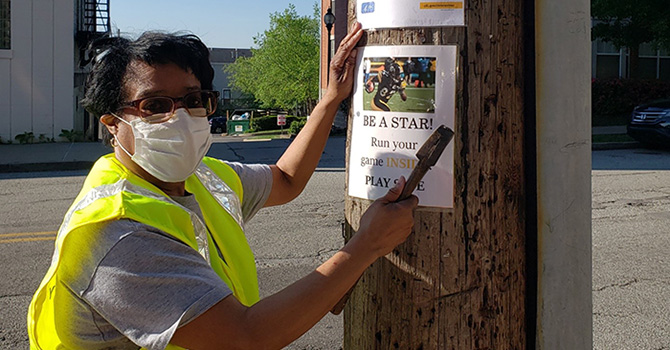Lent is supposed to last for 40 days, give or take a few Sundays. But when you live with chronic illness, life itself can feel like a penitential season, a perpetual Lent, drawn out into jagged edges that hurt no matter which way you turn to get comfortable.
I have officially lived with chronic illness for three years. That, at least, is when I got a diagnosis: long COVID with a side of fibromyalgia. But my body has hurt for a lot longer than that.
The pain has always been around, like a telemarketer calling every day about an extended car warranty. And there’s no effective way to block the caller, who keeps dialing again from a different number.
So when Lent makes an appearance every year, I contemplate what my sacrifice should be, especially as a Catholic. During this season, we’re often told to give up something to make us hurt a little (or a lot) so that we can know more of the pain of the cross and be grateful that Jesus died for us. But instead of thinking about Lent through that lens, I prefer the lens of prayer and closeness with God: How can I focus my life on God in these 40 days through prayer?
From this perspective, it’s not about what I can give up — heaven knows all the things I’ve had to give up because my body isn’t able to handle them anymore.
It’s not about what I can subtract but what God can add, because I am too tired to strive anymore during Lent. My body won’t let me. And I’ve found that my body’s weakness invites me to a deeper place than my body’s strength ever could.
There’s something in the experience of chronic illness that illuminates St. Paul’s words when he says that Christ’s strength is made perfect in weakness (2 Corinthians 12:9). When I can accept that I can’t make God love me (Bonnie Raitt now playing in my head), there’s room to breathe in the love that God already lavishes on me. And maybe that room is what Lent is really about.
But there is even more to Lent than just breathing in God’s love for me. Lent is ostensibly a time of churchwide renewal, when we sacrifice our comfort for the sake of noticing and providing for the less fortunate among us.
When we give up sugar or plan to diet for this church season, we miss that aspect of sacrifice — it’s not about me, myself and I; it’s about the human family thriving. Catholics are called to give alms during Lent, and I think we must examine how to do that well in the 21st century. Of course, we can be generous with our finances to help meet physical needs that are real and pressing, but we can also give our attention to those experiencing pain around us. We can literally pay them attention.
That is where chronic illness enters the Lenten conversation again: How can we pay attention to those who suffer pain every day? What stories do they have to tell us? What wisdom have they won through their struggle?
My pain has taught me many things about suffering and sacrifice, appropriate messages for Lent’s penitential season. I have learned how to pray without ceasing through groaning and wordless intercession. I have learned to love others through pain and discomfort, even at personal cost. I have learned that hope does not lie in my physical abilities but in my capacity for relationship — with myself, with God and with my neighbors.
I read the Scripture and look for stories of chronic illness to see how faith transforms even our continual pain into glory — the woman with the issue of blood, Naaman with his leprosy, Jacob with his out-of-joint hip, and Jesus, the Lamb who was slain.
I won’t go so far as to say that chronic pain is a gift — I don’t believe that God gives us pain on purpose — but I will say that my continual pain can be the site of great hope, hope for the resurrection of all creation that Jesus inaugurated through his death and rising again.
Through the tears and through the struggle and through the waiting, I know that though the sorrow may last for the night, joy comes in the morning (Psalm 30:5). This is what Lent teaches me. This is what chronic pain teaches me. Come quickly, Lord Jesus!














